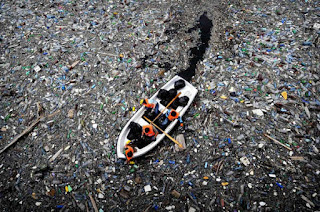9.2 Six Chemical Classes
1. Highly Fluorinated -This is a man made chemical. Highly fluorinated chemicals can enter water ways get into our drinking water and our food. We are exposed through a variety of settings both at work and home. It is incredible to learn, that 98% of people have it in our bodies. should be avoided unless function essential.
2.Antimicrobials- This chemical is used to inhibit the growth of organisms or kill them all together. There is no perceived benefit as it does not replace hand washing with soap and water and can cause more harm. Tricolsan is a common antimicrobial used in products. However learning more about throughout the articles and this video, it is best to avoid antibacterial, antimicrobials, and anti-odor because of the effect on aquatic life, human health, and agriculture.
3.Flame Retardants- I understand the importance of flame retardants in fire fighters line of work- to slow or stop fires. However, learning that it does not always function as it should and is found in TVs, insulation, car seats and other baby products is especially concerning as children are the most vulnerable after fetuses. I learned to look for TB117-2013 to know that it does not contain flame retardant.
4.Bisphenols +Phthalates- This chemical is everywhere because plastic is everywhere in every aspect of our life whether we use it or not someone we know uses it. Bispehnols and Phtalates are well known harmful and toxic chemicals that even manufactures have started labeling their products 'BPA-Free' unlike the other chemicals in these 6 classes. They are hormone disruptors, obesogens, and cause other health risks to human health. What I learned was not to microwave plastic containers and not to use plastic for hot foods or drinks. Avoid plastic with code 7.
5.Some Solvents-Solvents are ued to disperse or dissolve substances. However, with solvents like the ones in gasoline, paint, and nail polish removers we know right off the bat that they are not good for us by the vapors they expel into the air and we breath in. It is found in our cosmetic products and I learned that xylene is what I should check my nail polish remover does not contain. Like many of the other chemicals, some solvents have been replaced by other chemicals but their harmful effects are not well known and therefore could potentially be more toxic. Replacement does not necessarily been healthier for us or the environment.
6.Certain Metals- Mercury, Lead, Cadmium, and Arsenic are found throughout our environment. Learning about Cadmium and how it can be found in leafy greens, potatoes, grains, legumes ( basically everything I eat on a daily basis) just makes me feeling like welp is there any way to really avoid these elements? I know the toxic effects of Mercury and Lead those have been well established in society. Arsenic being found in baby rice cereals? Just makes me sick to my stomach. The fact that these metals can cross the baby's blood brain barrier and cause neurodevelopment problems breaks my heart. I got to see my baby's beautiful little brain yesterday at my ultrasound and thinking now about how something could harm that is a terrible thought.




Hi Mayra,
ReplyDeleteAfter learning about the six chemical classes, I felt like the government are not regulating these chemicals in consumer products and not prioritizing our health. It's scary to know that we are surrounded of these chemicals and we used products that contained these chemicals daily. In addition, these chemicals are also polluting our food and water. I think more people and the government need to be educated. We need to push for national policies that will not only protect us but also our environment from these toxic chemicals.
- Krissy